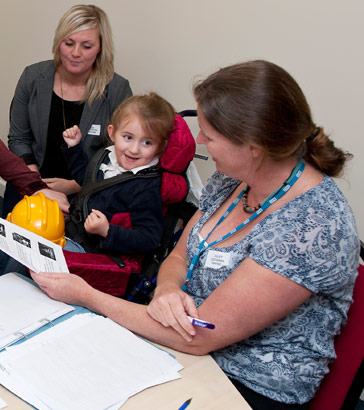
A child or young person has special educational needs
if he or she has a learning difficulty or disability which calls for special educational
provision to be made for him or her.
(Children and Families Act 2014)
A child of compulsory school age or a young person has a learning difficulty or
disability if he
or she:
- Has a significantly greater difficulty in learning than the majority of others of the same age; or
- Has a disability which prevents or hinders him
or her from making use of facilities of a kind generally provided for others of the same age in mainstream schools or mainstream
post-16 institutions.
A child under compulsory school age has a learning difficulty or disability if he or she is likely to be within subsection (2) when of compulsory school age (or would be likely, if no special educational provision were made).
A child or young person does not have a learning difficulty or disability solely because the language (or form of language) in which he or she is or will be taught is different from a language (or form of language) which is or has been spoken at home.
(Children and Families Act 2014)

All maintained mainstream schools and academy schools (including free schools) must have a special educational needs coordinator (SENCO) – a qualified teacher working at the school with designated responsibility for coordinating special educational provision.
The SENCO has to complete an induction period under the Education Act 2002 regulations. They also have to achieve a National Award in Special Educational Needs Coordination (NASENCO) within three years of appointment.
The key duties of the SENCO are outlined in the 0-25 SEND Code of Practice (2015) (paragraph 6.90) and in the Special Educational Needs and Disability Regulations 2014.
Teachers are at the heart of the new 'SEN support' system. They are supported by the strategic role of the SENCO, with strong leadership from headteachers and governors.
A SENCO's role includes:
- Jointly determining the strategic development of special educational needs policy and provision, and establishing a clear picture of total available special educational needs resources;
- Operationalising special educational needs policy across the school;
- Working closely with and providing professional support and guidance to colleagues and parents;
- Coordinating specific special educational needs provision for individual pupils;
- Working with the class or subject teacher (and collaborating with specialists and parents) to assess for special educational needs, develop evidence-based interventions and monitor progress towards agreed outcomes;
- Ensuring parents are informed of any special educational provision made for their child;
- Working closely with the Designated Teacher for 'looked after' children;
- Being aware of provision in the Local Offer.
(Department for Education, 2014)

Write down your expectations of how the SENCO in your school should work with you and your pupils.
Search for the term 'role of the SENCO' in the 0-25 SEND Code of Practice (2015). Review your expectations of the SENCO in the light of this, and amend your expectations where necessary.
What changes will you make to your practice in the light of this.
Getting the right education for children/young
people with special educational
needs/disabilities is a matter of recognising individuality and providing personalised,
timely and appropriate responses.
Whether this is provided within a special school or through inclusion in a mainstream setting, or a combination of both, should be determined by the needs and wishes of each child/young person and their family, not a presumption based on their ‘category’ of disability.
On the next page, Harvey's dad Simon talks about the diagnosis and treatment of his son's deafness.
Although Harvey is now 14 years old, and a diagnosis of his deafness was made early, his family still finds that educational support for hearing and language has been disappointing. In other words, although early identification is important, so is a timely and appropriate response.
Early intervention
-
 Simon talks about Harvey's diagnosis1:51
Simon talks about Harvey's diagnosis1:51 -
 Simon talks about school provision for Harvey's needs1:00
Simon talks about school provision for Harvey's needs1:00

Legislation and guidance
- Children and Families Act 2014
- Special Educational Needs and Disability Regulations 2014
- Schools: Guide to the 0 to 25 SEND code of practice: Advice for school governing bodies/proprietors, senior leadership teams, SENCOs and classroom staff (Department for Education, 2014)
- Special Educational Needs and Disability Code of Practice: 0-25 years (Department for Education/Department of Health, 2015)
